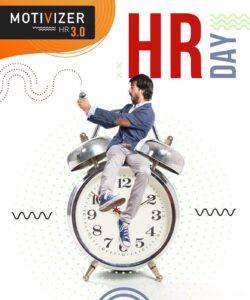The era of hybrid work

After the pandemic, the way companies work is changing. Employees appreciate the possibility of using hybrid work and it is increasingly clear that there is a lack of desire to return only to a stationary work model. This is a big challenge for the employer.
Hybrid work system – what employees are looking for
Over 85% of financial sector employees in the UK no longer see the office as their main place of work. This is today the main challenge for HR in finance, which would like to convince bankers to return to pre-pandemic norms.
Today, only 14% of industry respondents consider the office to be their main place of work, 42% – home, and 44% – hybrid solution. In the case of people combining work in the office and at home, remote work is preferred. Only one fifth of those surveyed would like to spend three or more days in the office per week. Two or fewer days in the office are preferred.
What does hybrid work mean?
The hybrid work system allows for a change in the physical location of the workstation and the employee, to some extent, can work remotely. This solution gives the employee more flexibility, but also obliges them to organize their work and accomplish tasks. The employee appreciates the possibility of using hybrid work and this system can be a benefit that employees, especially in IT and the financial sector, expect. Hybrid work is also cost-saving for the employer. Businesses are aware of this need and, to the extent possible, adjust conditions and ways of motivating “hybrid employees”.
The evolution of the workplace under the employee
Research conducted in the UK clearly shows that the majority of people planning to leave the industry claim that the quality of life and their well-being are the reasons for doing so. Attempts to force a return may prove to be spectacular failures in today’s difficult job market.
So far, financial companies have responded in various ways. Some have offered the well-known bait of cash. Bonuses have increased in 2021, and many large investment banks, in order to retain younger workers, have introduced widespread pay increases. Stock exchange floors and office campuses have been modernized to comply with new work rules. Citigroup Inc. plans to spend over £100 million (US$124 million) on a complete renovation of a 42-story office tower in London’s Canary Wharf district, and Goldman Sachs – a bank whose hardworking culture is part of Wall Street legend – has increased the vacation time for younger workers. And hybrid working – although reluctantly – is now a permanent feature of finance. JP Morgan estimates that around 40% of its 270,000 employees will work in a hybrid model.
In line with this trend, the workplace is evolving towards an approach more appropriate for employees and their productivity – a hybrid working model. This is a flexible working model focused on employees, which includes a combination of office work and remote work.
Companies in the technology sector are the most advanced in this new approach to work, where digitization and automation are part of their DNA. In May 2021, Google CEO Sundar Pichai announced a hybrid work plan for the company, which allows employees to work from the office for three days a week and remotely for the remaining two days.
“The future of work is flexibility,” Pichai said. Some other companies in the industry that fully utilize the hybrid working system are Hubspot, Microsoft, Infosys, Siemens and Amazon, to name just a few of the largest.
What benefits for hybrid working?
As the popularity and interest in hybrid work has grown, so too has interest in benefits that employers can offer to employees working outside the office. Many companies have responded to the needs of their employees by implementing cafeteria systems, through which employees can decide how and on what they want to use the additional funds offered by the employer. The most popular services have begun to include mindfulness and well-stress classes, as well as various vouchers that can be used in selected shops.
Employers today appreciate the fact that digital solutions allow employees access to HR resources also outside working hours and through mobile devices. This area is still developing and will continue to develop, although it will certainly change. Large international corporations, including manufacturing, logistics, telecommunications and financial companies, which have felt the effects of the pandemic to a lesser extent, do not plan to reduce spending on benefits, but actively adapt to a changing world and employee preferences.
The lack of access to sports facilities or cinemas during the pandemic has led to the popularity of streaming offers – online training, mindfulness exercises, or platforms such as Netflix and Spotify – which can be used within the Social Benefits Fund (ZFŚS). Employers are increasingly financing benefits within current funds, which provides much greater opportunities to purchase services.
Today, employees want to make decisions about the benefit budget that the employer has granted them. In the near future, a much broader view of the role of non-wage benefits will be important. Like never before, the development and application of technology in this area will be key to the future of organizations. It is important to remember that the concept of a company’s value is changing, human capital and the wellbeing strategy (read more about why wellbeing in organization is it so important), which will not only attract specialists, but also retain them, will be an important element of value.
Advantages of HR digitalization
However, benefit platforms are just a fraction of what companies are doing today to enable hybrid or fully remote work. There is a significant progress in the digitalization and automation of the entire HR area. Properly chosen tools can reduce the number of paper documents in the HR area by as much as 90%, support the building of employee engagement and automate subscription processes such as sports cards or medical packages. Additionally, employees can handle all administrative matters without having to come to the HR office. Leave requests, eye glass allowances, or education funding requests can now be handled completely remotely. Additionally, digitalization and automation of HR processes will be key for those responsible for human capital to be able to allocate maximum time, energy and attention to creative work that will yield tangible benefits for the organization, rather than just dealing with paperwork.
Check out the Motivizer offer
The Motivizer benefit cafe platform, in addition to new offerings – Voucher4Sport vouchers for sports competitions, and KROSS product offers – has a constantly expanding base of benefits available to employees.
Find out more about what a benefit cafe system is.
Recent Posts:
- Capital24.tv Debate with Piotr Dubno – “Economy, Innovation, Investments. What Changes Await Us?
- The future of HR – what will be the key to organizational success?
- Are you keeping up with the idea of a modern workplace?
- Burnout, how can an employer help an employee?
- Digitalization of HR is key to unlocking the full potential of an organization

